Who knew the right glass could make all the difference when it comes to maximizing your enjoyment of your favorite beer or wine? Oh wait – I knew, and lots of connoisseurs knew, but I’ll acknowledge that I didn’t know quite to this extent.
Granted, my understanding of how different glasses can impact the flavor and aromatics of your beverage was largely limited to wine and different varietals, but a handy video popped up last week during Lifehacker‘s Food Week that alerted me to exactly how much the same principle applies to beer.
Now, I’m about to embark on a topic that hopefully is part of the reason you come to The Classy Geek; ways to use your thirst for knowledge and hunger for information to enhance your life and lifestyle in ways that don’t always apply to your chosen profession. You know, ways to improve your workspace, ways to build a great bar at home, ways to shop for great gear, and a great way to cook a steak in a small space.
When you go into topics like this, its inevitable that some people will be more concerned that you’re “ruining” something for them – that somehow describing that a little forethought and a nice glass can help you enjoy a glass of wine or beer a little more than you might have otherwise. Listen, that’s the name of the game – none of us know everything and this is a learning process we’re going through together.
Does that mean that you have to change your habits or you’re a horrible person if you don’t? Not at all. Does it mean you’re missing out? Maybe, depending on how closely you pay attention to your beverages, but it should never stop you from cracking open a bottle now and again and taking a swig straight from it. Does it mean you have to run out and buy five different beer glasses and a wine glass for every varietal you like to drink? Maybe if you have the cash, but for most of us, probably not unless we really like our beer and wine.
We’ll get to that though, let’s take a look at the video behind the jump.
- Beer: The Perfect Pour Matters
The video came from this Lifehacker article on how to properly pour your beer and what kinds of glasses are best for what kinds of beer.
One thing I have to re-iterate from the video is the fact that the best way to pour a beer is just so you get some head on the top but not so much that your glass overflows, leaving precious beer on the countertop. I’ve made this mistake several times – pouring a beer with an angled glass, and then at the end tiltiing it up slowly and cheap oakley sunglasses winding up with a beer with very little to no head at all.
The problem with this, clearly, is that the lack of head is a bad thing – I wasn’t sure until I watched the video, but you need a good solid head on the top of your beer to open up the aromatics that are so important when you’re drinking a good beer.
I also have only a few beer glasses: ones that look like this set of 6 22-ounce Libby’s Pilsner Glasses
– they’re not expensive, they’re available just about anywhere, and they get the job done.
As mentioned in the video though, they’re great…if you drink a pilsner out of them, and that’s about it. The height of the glass lets you pour in a nice beer with a good head, so even though not everyone would suggest that this be your go-to beer glass, I would, mostly for bang-for-your-buck reasons. You can grab a six pack of these glasses, keep them in the cabinet, and have enough to serve out a six pack to friends of a nice beer at the same time without drinking from the bottle.
However, the type of glass that most beer aficionados would really suggest is a good, solid, tulip glass. You know, like this Boddingtons Tulip Pint Glass
, with the flared neck that allows aromatics to circulate in that wider part of the neck there, or even better, a tulip glass that’s built Belgian style, like this 13-ounce Belgian Tulip Beer Glass
, or a beer goblet with a stem so you can hold the glass by the stem and the bottom and not inadvertently wind up warming your beer while you hold it.
The thing you have to have noted so far is that these glasses aren’t remarkably expensive. It’s worth it to have one or two around, especially if you find yourself sharing a nice brew with a best friend or special someone on a regular basis. If the investment isn’t for you, the least you can do is a couple of pilsner glasses, at least for yourself.
If I were you and had a little cash to spend on the perfect cheap oakleys glassware for someone who likes a little beer, I would say buy a six-pack of the pilsner glasses and two nice tulip-styled goblets for yourself. Trot out the pilsner glasses when you have a few people over, and when you’re enjoying a brew on your own or with one other person, enjoy that brew from a fine glass goblet.
- Wine: Sniff Before You Sip
Now then, we’re on to wine. The video just above here should help you pour the perfect glass of wine. It’s pretty straight forward, no magic there – just leave the glass on the table unless you have no faith in your aim, and try to avoid dripping, okay?
Wine glasses, on the other hand, weren’t discussed in the video, but when it comes to wine – a drink with no head, of course (except for bubbly, when you don’t really want much head anyway but you do want to let some of those aromatics loose) you’ll probably need a few more options.
Again, if you’re on a tight budget, I wouldn’t suggest going all out and buying every single varietal glass there is, but if you have the cash to spare and you drink a lot of wine (note the and in there) it’s worth having at least a couple that match up with the varietals that you drink most often.
After all, if you drink a lot of champagne or sparkling wine, you need flutes. Seriously – drinking bubbly from a big, heavy, round-bottomed red wine glass is a sure ticket to bubbly that goes flat in a couple of minutes and an overpowering aroma when you get your nose in the glass.
Think I’m crazy here? I’m not. Even The New York Times has picked up on the notion that different glasses, based on the design of the bowl of the glass, the height of the walls, and the length of the stem all play a role in exactly what you get out of the nose of the glass and how you experience the flavor of your wine when you stick your nose in and tip the glass back to take a sip.
I can’t stress enough – as my role-model of sorts Gary Vaynerchuk has stressed several times on his show Wine Library TV – the importance of getting your nose into the glass and smelling your wine. He calls it the “sniffy sniff,” which I’m absolutely sure he’s got trademarked (if he doesn’t, he definitely should) but it underlies the fact that so many of us are filling our wine glasses up to near the brim and drinking without even bothering to smell the noses of our wines.
Now I won’t go out and tell you to do as Maximilian Riedel, President of Riedel Crystal USA and subject of that New York Times article above would like you to do: run out and buy several pieces from the entire Riedel Vivant Collection
, also available at Target stores, if you’re a brick-and-mortar kind of person – but I will tell you that there’s some truth in what he says.
At the very least you should have a nice set of wine glasses to enjoy any varietal: maybe the red wine glasses
. At best, you might want a set of champagne flutes
(sadly these ones are unavailable at Amazon) for the times you want sparkling wines and the red wine glasses for everything else.
It’s difficult for me to really suggest a separate set of red and white wine glasses even though Riedel makes a set of white wine glasses
, but they’re really so alike that I think only some of the most talented noses can really discern differences from the same wine in either of the red or white wine glasses.
I have to say though, purely based on looks, there’s something more elegant about the Riedel pinot noir glasses
or even the really nice Riedel burgundy glasses
with the lip on the top there. I can understand the lip when it comes to tasting burgundies, but I think at the end of the day I just really like those big, tall-stemmed, fat-bottomed glasses where you can safely swirl your wine and release some of those aromatics around without it sloshing up over the rim.
If you can find some of those big, fat glasses, I definitely suggest you take good care of them, hand-clean them with warm soapy water and finish them off with a nice dustless cloth (like micro-fiber; that stuff works wonders on just about anything it touches) and make sure you have enough wine glasses to share with the people you usually entertain with without having to mix and match them. There’s nothing classy about drinking a nice wine from a big fancy glass and your poor guests sipping from plastic tumblers, follow me?
Like I said though, if you’re on a budget, your best bet is to pick up a nice set of wine glasses to keep around for regular use: a pair you can get your nose into the top of. Pick up your Cheap Oakley Sunglasses champagne flutes when you’re ready to spend on a good bottle of champagne, which means most people should wind up owning a set of flutes around New Year’s. Pick a good set and take good care of them and they’ll last you a lifetime.
If you have more to spend though, do the same as you would with beer glasses; get a set for regular use and sharing with friends or visitors you’re entertaining, and then get a couple of really nice and special ones – you know, for occasions or when that special someone is visiting.
With a couple of improvements in the glassware department and a little attention to the way you pour and enjoy your tasty adult beverages, you’ll wind up picking up notes and flavors and smells that you never knew existed in your beer and wine. Remember to open your nose though – a good amount of a your beer or wine’s flavor is in the aromatics, so make sure to shake them loose either with a little head on your beer or by swirling your wine and making sure to smell it before and while you sip.
As soon as you start picking up those flavors and smells and identifying them, you’ll enjoy even the worst beer and wine that much more; and you’ll wonder how you ever drank some of the stuff you’ve been drinking without noticing them. Don’t run around flaunting your knowledge to unfavorable audiences though – that’s not classy at all – but definitely apply it in the right situations and with the right people; you’ll find it’ll get you far, and soon you’ll be suggesting beers and wines to people based on the specific qualities you enjoy about them other than “how smooth it goes down.”
You’ll quickly find yourself separated from the folks who dismiss entire categories of beer or wine out of hand because “they don’t like the flavor.” Believe me, it’ll be that knowledge, and the hunger you’ll have to learn more, smell more, and pick up more interesting tastes and compare different wines and beers, that will make you eager to go to local wine festivals and tasting rooms or beer gardens and microbreweries, and you’ll never look back.
images in this post courtesy of The Perceptive Travel Blog, (Dutch Daily Life: Swing by the Brouwerij (Brewery)) David Jensen at the blog Beer 47, (21st Amendment Monk’s Blood Review, used with permission) Flickr user Tammy Green, (Glass of Red) and product descriptions of Libby and Riedel glasses at Amazon.
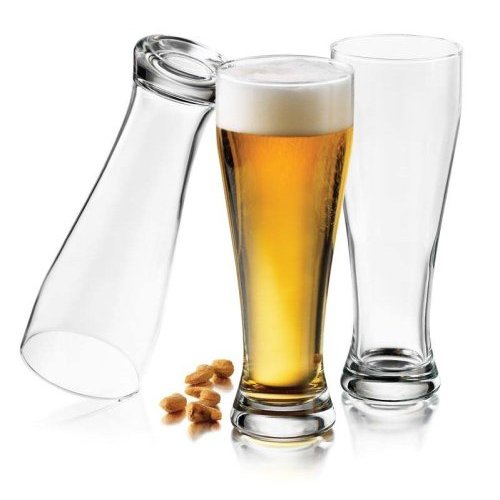
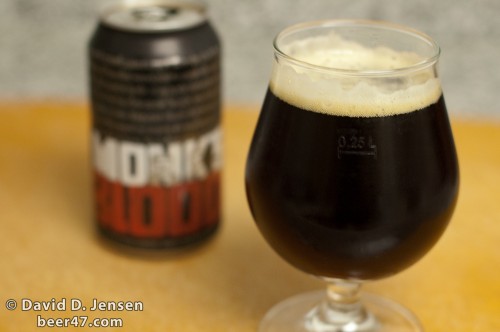
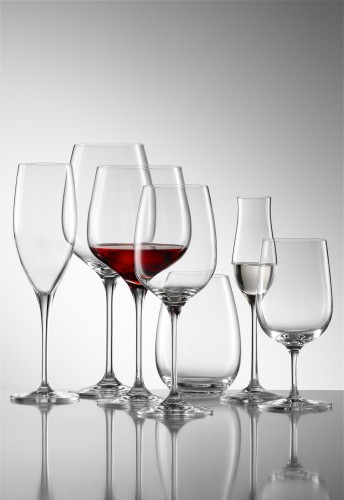
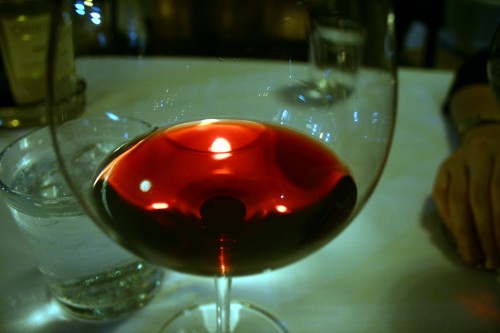
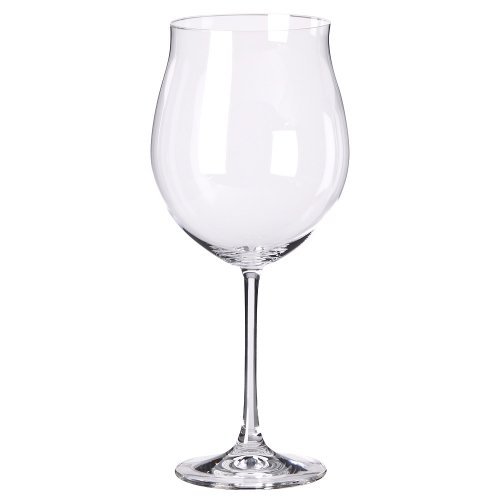
Leave a Reply